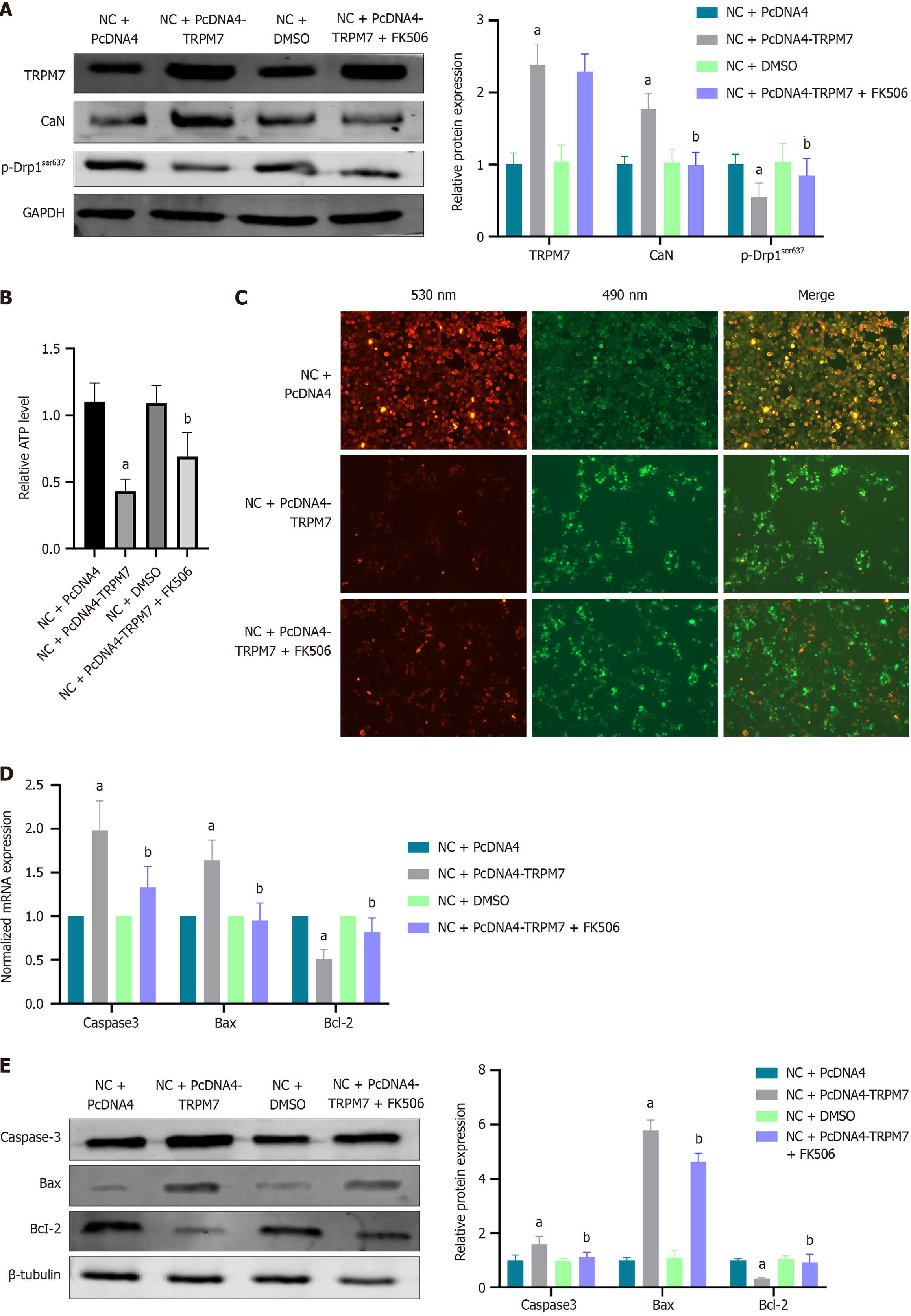Copyright
©The Author(s) 2025.
World J Diabetes. Aug 15, 2025; 16(8): 106833
Published online Aug 15, 2025. doi: 10.4239/wjd.v16.i8.106833
Published online Aug 15, 2025. doi: 10.4239/wjd.v16.i8.106833
Figure 8 Overexpression of transient receptor potential melastatin 7 increased expressions of calcineurin and apoptosis-associated molecules, decreased expressions of adenosine triphosphate and p-dynamin-related protein 1ser637 in hippocampal neuronal cells.
A: The relative protein expression of transient receptor potential melastatin 7 (TRPM7), calcineurin, and p-Drp1ser637; B: Relative of adenosine triphosphate level; C: Mitochondrial membrane potential: The red fluorescence was decreased in the NC + PcDNA4-TRPM7 group, indicating an increase in apoptotic cells; D: The normalized mRNA expression of caspase-3, B-cell lymphoma 2 (Bcl-2)-associated X protein (Bax), and Bcl-2; E: The relative protein expression of The relative protein expression of caspase-3, Bcl-2-associated X protein, and Bcl-2, FK506 is a calcineurin inhibitor that attenuates the adenosine triphosphate reduction and cell apoptosis caused by TRPM7 overexpression. aP < 0.05, compared with normal control + PcDNA4 group; bP < 0.05, compared with NC + PcDNA4-TRPM7 group. Data presented as mean ± SEM. Drp1: Dynamin-related protein 1; TRPM7: Transient receptor potential melastatin 7; CaN: Calcineurin; NC: Normal control; DMSO: Dimethyl sulfoxide; Bax: B-cell lymphoma 2-associated X protein; Bcl-2: B-cell lymphoma 2.
- Citation: Li J, Gao M, Wang JX, Li HY, Wang P, Yuan F, Liu AJ, Zhang SY. Troxerutin improves diabetic cognitive dysfunction by inhibiting mitochondrial fission mediated by transient receptor potential melastatin 7/calcineurin/dynamin-related protein 1ser637. World J Diabetes 2025; 16(8): 106833
- URL: https://www.wjgnet.com/1948-9358/full/v16/i8/106833.htm
- DOI: https://dx.doi.org/10.4239/wjd.v16.i8.106833









